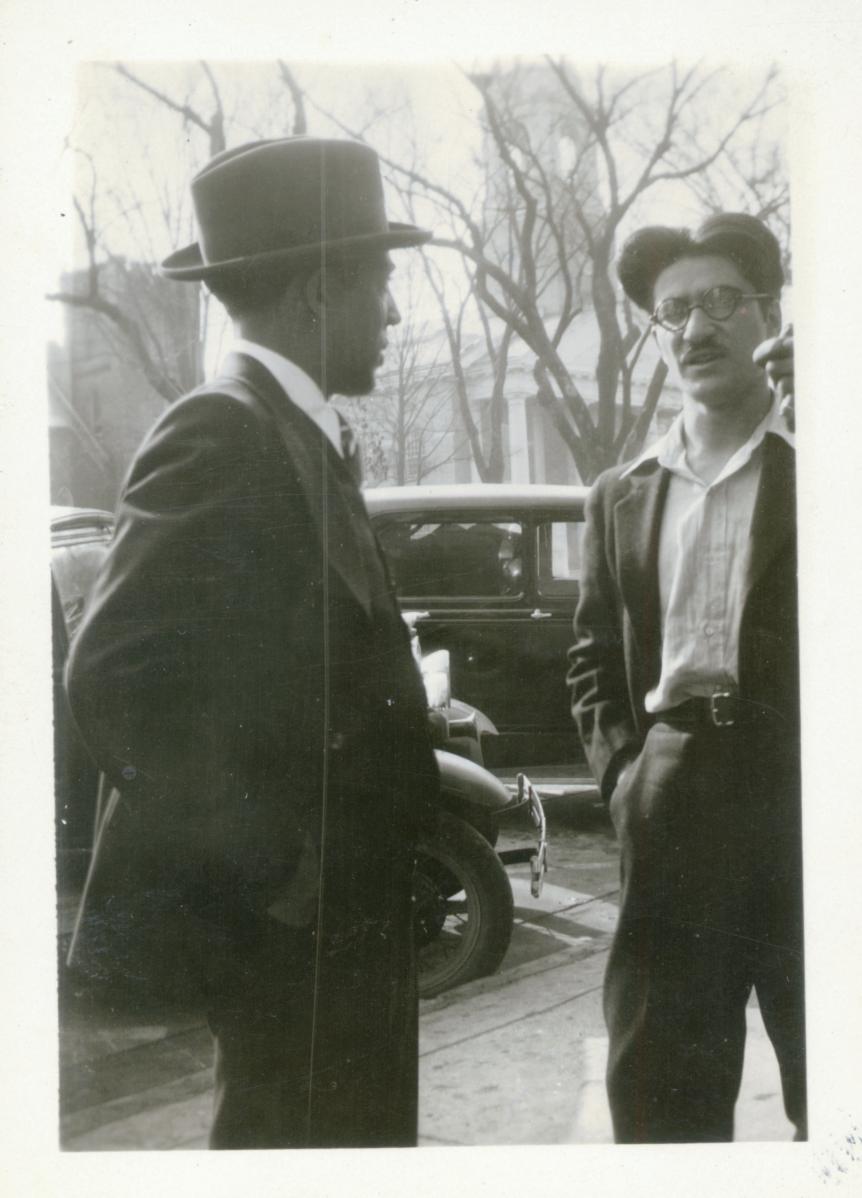
Chapel Hill has seen its share of notable visitors throughout its history. Some of these notables have been welcomed to town with open arms, others…not so much. In December 1931, writer Langston Hughes received one of these colder varieties of welcomes to the Hill.
Hughes had been invited to Chapel Hill by Milton “Ab” Abernethy, one of the publishers of a short-lived journal of literary and social commentary called Contempo, based in Chapel Hill. Abernethy, an avowed communist who, before settling in Chapel Hill, had been expelled from State College (now North Carolina State University) for publishing some rabble-rousing words about the college administration, is quite an intriguing figure in his own right – perhaps we’ll add more about Abernethy in a later post.
Although only lasting from 1931-1934, Contempo was able to build a strong reputation among critics for expanding the boundaries of literary work in the 1930s and was able to attract submissions from the likes of William Faulkner, Ezra Pound, Gertrude Stein, Sherwood Anderson, Erskine Caldwell, Hilda Doolittle (H.D.), e.e. cummings, William Carlos Williams, and many other luminaries of the day.
[The Southern Historical Collection is proud to be the home of a 720 item collection of Contempo Records (#4408) which includes letters to and from authors, typescripts of literary works, photographs, clippings and other items. The photograph above-left comes from this SHC collection.]
Throughout October and November 1931, Abernethy and Hughes corresponded to discuss including some of Hughes’ work in the December 1 issue of Contempo. The publishers had decided that this December issue would be a special issue on the events surrounding the case of the Scottsboro Boys – a special issue that would include opinion pieces on the case from those in the literary community, as well as poems and other works in response to the Scottsboro case. Hughes submitted several items to Abernethy for publication, including: a poem called “Christ in Alabama,” an accompanying drawing called “Black Christ” by artist Zell Ingram of Cleveland, Ohio, as well as an essay he called, “Southern Gentlemen, White Prostitutes, Mill-Owners, and Negroes.”
These titles alone would have caused a stir in the American South of the 1930s, but the content was also quite daring. The essay began with the sentence, “If the 9 Scottsboro boys die, the South ought to be ashamed of itself — but the 12 million Negroes in America ought to be more ashamed than the South.” The poem, “Christ in Alabama,” was even more pointed. Click here to view an image of the front page of the December 1931 issue of Contempo.
The publication of the Scottsboro issue of Contempo was timed to appear several days before Hughes was to visit Chapel Hill for a public reading. Citizens of the town of Chapel Hill were incensed. UNC President Frank Porter Graham and Chapel Hill town officials received a flood of letters denouncing Hughes as “sacrilegious” and calling for his engagement to be canceled (to put it softly). Graham did not interfere and the reading went on as planned.
Later, during Graham’s hard-fought 1950 Democratic primary in the campaign for U.S. Senate, the Hughes case was used quite effectively by Graham’s opponent, Willis Smith, as an example of Graham’s longstanding left-leaning (read: Communist) tendencies.
There is more of this story to discover in several of the SHC’s collections, as well as in various resources in the North Carolina Collection. There are letters and clippings relating to Hughes’ visit in the Guy Benton Johnson Papers, the aforementioned angry letters written to Frank Porter Graham in the Frank Porter Graham Papers, and other items. This is definitely an episode in Chapel Hill’s past that deserves further scholarly treatment – and it just so happens that we’ve got the raw material for said treatment right here in the SHC stacks!
